Bacaro di mistero
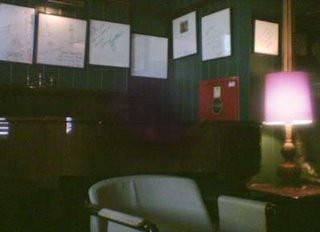 Hmm, not many takers yet for last week's mystery bar. Too hard? Too easy? Not hip enough?
Hmm, not many takers yet for last week's mystery bar. Too hard? Too easy? Not hip enough?I could give more hints: in fact, I think I already did.

Personal reflections on urbanism, urban life and sustainable urban design in Wellington, New Zealand.
 Hmm, not many takers yet for last week's mystery bar. Too hard? Too easy? Not hip enough?
Hmm, not many takers yet for last week's mystery bar. Too hard? Too easy? Not hip enough?
 A new shop has just opened in what was once Wellington's Chinatown, selling art, t-shirts and a range of well-designed little knick-knacks. It goes by the self-explanatory (if unoriginal) name of 10 Haining St, and it's taken over an old substation building, which is now enlivened by some stained glass windows and colourful flags.
A new shop has just opened in what was once Wellington's Chinatown, selling art, t-shirts and a range of well-designed little knick-knacks. It goes by the self-explanatory (if unoriginal) name of 10 Haining St, and it's taken over an old substation building, which is now enlivened by some stained glass windows and colourful flags. And it is a lovely little space. On a grotty day it felt full of light, and it's a strange feeling to step through the low and narrow door from a drab street into a room full of intriguing and unusual things. Most of their products are unavailable anywhere else, surprisingly reasonably priced (I bought a t-shirt for $30), and go beyond the clichés of "outsider art".
And it is a lovely little space. On a grotty day it felt full of light, and it's a strange feeling to step through the low and narrow door from a drab street into a room full of intriguing and unusual things. Most of their products are unavailable anywhere else, surprisingly reasonably priced (I bought a t-shirt for $30), and go beyond the clichés of "outsider art".
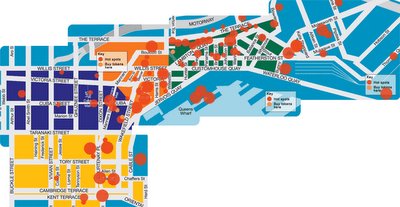

Peter Brooks denies that Waterfront Watch want nothing but park for Waitangi, but the article "Election Promises Questioned" (Capital Times, 12 October) stated: "a motion was passed opposing the large buildings, proposing instead that the entire Waitangi/Chaffers area between Te Papa and Oriental Parade be declared public park land indefinitely". That's a vision that I, and most people I talk to, do not share. He also says they accept mixed use, so I assume they want homes and workplaces on the waterfront?Oops, I was rude about the Hutt again! On the other hand, they have been asking for it.
Doris Heinrich suggests that my vision is for "buildings along the length of the waterfront" with "a few narrow pathways between buildings". Personally, I could handle a more urban waterfront, but my letters always advocate the balanced solution that is proposed, which is far from Heinrich's caricature. For example, the public spaces leading to the water at Kumutoto will be wider than Cuba Mall: hardly "narrow lanes"!
We'll never agree about whether empty spaces are dull. The Hutt Valley has plenty of open space, and it's as dull as ditchwater; downtown Wellington is fairly built up, and it's relatively lively. Let's have a waterfront that's alive around the clock, not one that dies when the sun goes down.
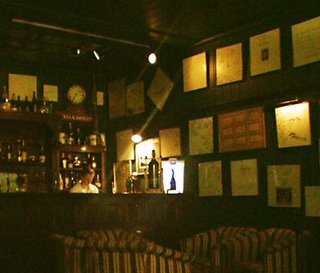 This week's mystery bar is so old school that it almost resembles the headmaster's office at my old school. The wood panelled walls and brown leather sofas give it a dark, cosy feeling which is let down only slightly by a few decidedly 80s tub chairs. Among the celebrity signatures framed on the walls are those of Cleo Laine and John Dankworth, and you wouldn't be surprised to see them pop up in the corner to belt out a rendition of "Lush Life".
This week's mystery bar is so old school that it almost resembles the headmaster's office at my old school. The wood panelled walls and brown leather sofas give it a dark, cosy feeling which is let down only slightly by a few decidedly 80s tub chairs. Among the celebrity signatures framed on the walls are those of Cleo Laine and John Dankworth, and you wouldn't be surprised to see them pop up in the corner to belt out a rendition of "Lush Life".
 The data has spoken: there is obviously a strongly negative correlation between strictness and hipness.
The data has spoken: there is obviously a strongly negative correlation between strictness and hipness.
 A couple of weeks ago I wrote about a new fish 'n' chip shop planned for the waterfront promenade, underneath the Dibble. Well, the space has now opened, but to my surprise and disappointment, there was no sign of battered fish, sizzling chips, salt, vinegar or tomato sauce: just coffee and juice. What happened?
A couple of weeks ago I wrote about a new fish 'n' chip shop planned for the waterfront promenade, underneath the Dibble. Well, the space has now opened, but to my surprise and disappointment, there was no sign of battered fish, sizzling chips, salt, vinegar or tomato sauce: just coffee and juice. What happened?
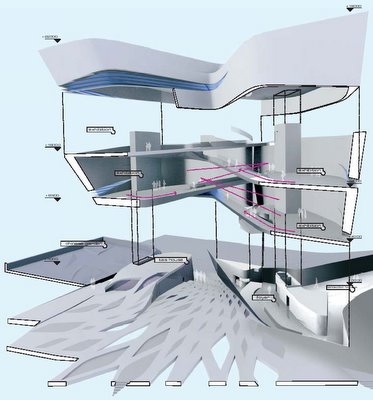 It's a bold choice, and Wellington Waterfront Ltd are striking a cautious note about the likely expense of this building. For more detail, see my review of UN Studio's entry, and the PDF files on their page at the WWL site.
It's a bold choice, and Wellington Waterfront Ltd are striking a cautious note about the likely expense of this building. For more detail, see my review of UN Studio's entry, and the PDF files on their page at the WWL site.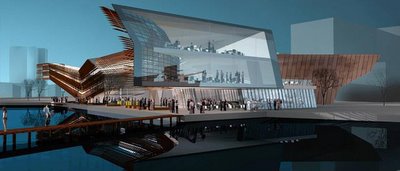 Since one of these buildings includes some apartments, finding financial backing is likely to be easier than for the site 4 building. For more information, have a look at my review of John Wardle's entry, and the images on their page at the WWL site.
Since one of these buildings includes some apartments, finding financial backing is likely to be easier than for the site 4 building. For more information, have a look at my review of John Wardle's entry, and the images on their page at the WWL site.
 In a comment on last week's post about the Croxley Mills apartments, David asked why there isn't more high-density housing in New Zealand, even compared to his home town of Darwin:
In a comment on last week's post about the Croxley Mills apartments, David asked why there isn't more high-density housing in New Zealand, even compared to his home town of Darwin:Do Kiwis just not want to live in city centers, or do they not want to live in high rise blocks, or is there some regulatory intervention happening to make it hard to develop and live in big apartment buildings?I think that there's no single answer, and also that the situation is changing, especially in Wellington. Regulation may have been an issue a few decades ago, but it doesn't seem to be the case now. It seems to me that if anything, the Wellington City Council has been more than happy to grant consents to buildings that are over the District Plan limits (and if anyone reading this has experience in designing or developing high rises in Wellington and disagrees, I'd be interested to hear otherwise).
 Unfortunately, there's a limit to how much we can increase the density of our inner suburbs without compromising their historic character. Some of the objectors to infill may just be Nimby's worried about diluting their property values, but some of the developers' efforts make no pretense about being about anything other than quick, cheap profit. So if we're to fight urban sprawl, Wellington might need more high-rise apartments in the CBD and Te Aro. And in case you think that I'm a fan of skyscrapers, have a look at these guys!
Unfortunately, there's a limit to how much we can increase the density of our inner suburbs without compromising their historic character. Some of the objectors to infill may just be Nimby's worried about diluting their property values, but some of the developers' efforts make no pretense about being about anything other than quick, cheap profit. So if we're to fight urban sprawl, Wellington might need more high-rise apartments in the CBD and Te Aro. And in case you think that I'm a fan of skyscrapers, have a look at these guys!
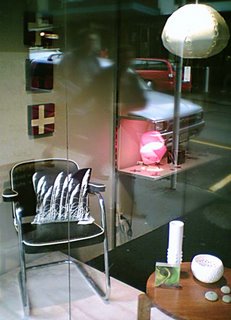 You may have noticed that most of the shops featured in the "Shops we love" posts specialise in items that you can eat, drink, read or wear. That's because I'm generally happy to leave interior design and homeware stores to those who actually spend some time at home, but in Beckon's case, I'm willing to make an exception.
You may have noticed that most of the shops featured in the "Shops we love" posts specialise in items that you can eat, drink, read or wear. That's because I'm generally happy to leave interior design and homeware stores to those who actually spend some time at home, but in Beckon's case, I'm willing to make an exception.
 There's always the Shed 22 brewery of course, and in summer it's hard to beat their Verboden Vice, but by beer o'clock they're mostly in the shadow of the Odlins building. Here's hoping that the Free Ambulance building gets a decent bar when its renovations are complete (in January, with any luck), as that will have some of the best sun in the city, and it will be especially pleasant when the lagoon is extended southwards. The wharenui is expected to have a cafe when it's complete, which will also help make this corner of the waterfront much livelier. But there's currently a dry zone from Taranaki St to Oriental Bay, so we'll have to wait to see what the Waitangi precinct delivers.
There's always the Shed 22 brewery of course, and in summer it's hard to beat their Verboden Vice, but by beer o'clock they're mostly in the shadow of the Odlins building. Here's hoping that the Free Ambulance building gets a decent bar when its renovations are complete (in January, with any luck), as that will have some of the best sun in the city, and it will be especially pleasant when the lagoon is extended southwards. The wharenui is expected to have a cafe when it's complete, which will also help make this corner of the waterfront much livelier. But there's currently a dry zone from Taranaki St to Oriental Bay, so we'll have to wait to see what the Waitangi precinct delivers.
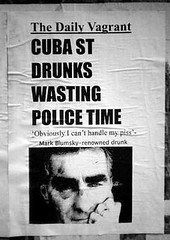 Copies of this poster have been plastered (terrible pun intended) all over Cuba and Ghuznee streets today (just up the road from Glover Park).
Copies of this poster have been plastered (terrible pun intended) all over Cuba and Ghuznee streets today (just up the road from Glover Park).
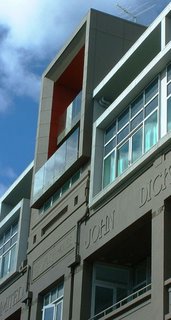 This is the Croxley Mills apartment development in Frederick St, Te Aro, in what was once Wellington's Chinatown but has more recently been full of light industry and bulk retail. It's an example of a typology that is becoming very common in central Wellington but is rarely done well: the rooftop addition.
This is the Croxley Mills apartment development in Frederick St, Te Aro, in what was once Wellington's Chinatown but has more recently been full of light industry and bulk retail. It's an example of a typology that is becoming very common in central Wellington but is rarely done well: the rooftop addition. My only criticism is from an urbanistic rather than aesthetic point of view: almost the entire ground floor is given over to parking and storage, presenting a blank and unfriendly pedestrian environment. I realise that it would have been optimistic to expect a retail or hospitality tenancy to flourish here straight away, but the nature of the area is gradually changing. By leaving this ground floor as blank concrete, the developers have effectively ruled out any possibility of this becoming an active edge when the demand does eventuate. Perhaps a wholesale, light industrial or trade-oriented business could have worked here in the interim, leaving the possibility for a livelier mixed-use precinct to evolve over time.
My only criticism is from an urbanistic rather than aesthetic point of view: almost the entire ground floor is given over to parking and storage, presenting a blank and unfriendly pedestrian environment. I realise that it would have been optimistic to expect a retail or hospitality tenancy to flourish here straight away, but the nature of the area is gradually changing. By leaving this ground floor as blank concrete, the developers have effectively ruled out any possibility of this becoming an active edge when the demand does eventuate. Perhaps a wholesale, light industrial or trade-oriented business could have worked here in the interim, leaving the possibility for a livelier mixed-use precinct to evolve over time.
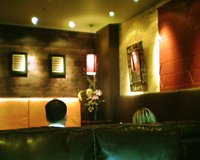 Today's mystery bar should be a doddle by comparison. It's a popular place that has recently gone through a fairly radical refit, presumably with the intention of attracting a very different demographic from its traditional regulars.
Today's mystery bar should be a doddle by comparison. It's a popular place that has recently gone through a fairly radical refit, presumably with the intention of attracting a very different demographic from its traditional regulars.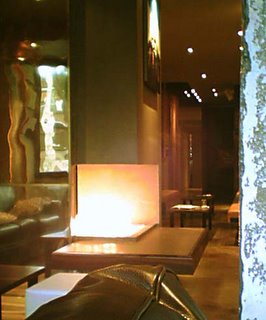 Will the new incarnation of this place attract new customers while retaining the loyalty of the old punters? Somehow I doubt it. The further you go into the depths of the bar, the closer it seems to the original, but I think that the two groups are deeply incompatible. If the artworks, designer fireplaces and flower arrangements don't put off the regulars, then the prices probably will. And if the old school drinkers remain here in force and stick to their old raucous music and sticky carpet ways, then the attempt to go upmarket is clearly doomed.
Will the new incarnation of this place attract new customers while retaining the loyalty of the old punters? Somehow I doubt it. The further you go into the depths of the bar, the closer it seems to the original, but I think that the two groups are deeply incompatible. If the artworks, designer fireplaces and flower arrangements don't put off the regulars, then the prices probably will. And if the old school drinkers remain here in force and stick to their old raucous music and sticky carpet ways, then the attempt to go upmarket is clearly doomed.
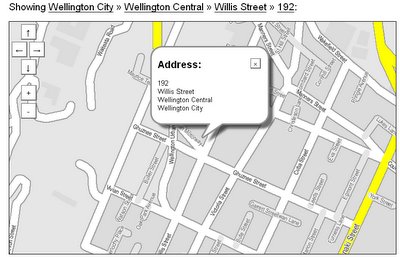 It's nice and clean, but lacks some of the detail found on the Wises and Where Are We? maps. However, there are some very nice features, such as the fast and intuitive Google-style panning, auto-completion of street names as you type, and the bread-crumb trail that lets you quickly zoom out to suburb or city level. Unlike either Wises or Where Are We?, it also lets you search by street number and link to it with a simple URL:
It's nice and clean, but lacks some of the detail found on the Wises and Where Are We? maps. However, there are some very nice features, such as the fast and intuitive Google-style panning, auto-completion of street names as you type, and the bread-crumb trail that lets you quickly zoom out to suburb or city level. Unlike either Wises or Where Are We?, it also lets you search by street number and link to it with a simple URL:"We want to have flavour. We don't want to be a generic, homogenised bloody list of where all the boutiques or Starbucks are in town," he says.That's the sort of thing that people in the US have been able to do with the Google Maps API for a while, and it's spawned all sorts of fascinating commercial and community mapping applications. I've looked before at opportunities for integrating blogging with mapping, but in New Zealand we've always been limited by the lack of online mapping services. Perhaps all this will change when ZoomIn's API becomes available next month.
"We want it to be a lot more 'two-way', so instead of just indexing things and plotting them on the map, we want people to add stuff - like their views of what cafes they like and what beaches are good, so people can use it to share information. They could perhaps take a photo of some street art and add it to the map."
![[D] Yellow Swans](http://photos1.blogger.com/blogger/6909/1288/200/d_yellow_swans.jpg) I just caught the last half of Christchurch duo Thomas:Parkes, who were billed as "Electro pop" and sounded somewhere between very early New Order and The Lightning Seeds, with perhaps a hint of Skallander at times in the vocals. Then there was seht playing with the 1/3 Octave Band, producing dense intriguing textures from music boxes, tape loops, contact mikes and 70s samples.
I just caught the last half of Christchurch duo Thomas:Parkes, who were billed as "Electro pop" and sounded somewhere between very early New Order and The Lightning Seeds, with perhaps a hint of Skallander at times in the vocals. Then there was seht playing with the 1/3 Octave Band, producing dense intriguing textures from music boxes, tape loops, contact mikes and 70s samples.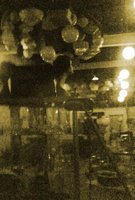 Leaving the blogger-filled environs of Happy (Hi Stephen, Hi Rose), it was interesting to note the contrast with the bright syncopated rhythms emanating from Latinos above. Which started me thinking about the strange juxtapositions and evocative traces that you can find in even such a bleak corner of our inner city as this part of Vivian St at 3am. Next door is an antique shop that specialises in mid-century retro furniture, approximately Art Deco to 70s, with a healthy obsession with the 50s. I particularly liked this disembodied head floating among the spherical glass lampshades.
Leaving the blogger-filled environs of Happy (Hi Stephen, Hi Rose), it was interesting to note the contrast with the bright syncopated rhythms emanating from Latinos above. Which started me thinking about the strange juxtapositions and evocative traces that you can find in even such a bleak corner of our inner city as this part of Vivian St at 3am. Next door is an antique shop that specialises in mid-century retro furniture, approximately Art Deco to 70s, with a healthy obsession with the 50s. I particularly liked this disembodied head floating among the spherical glass lampshades. A little further down the street, beyond the stridently post-modernist Salvation Army building, there's a reminder of the light industrial past that's gradually disappearing from this part of Te Aro. I can't believe I'd never noticed this giant spanner before! At about this time, I began to notice a constant distant roar, like jet engines at takeoff. It seemed to be coming from the harbour, but I couldn't see anything, so I blamed it on post-Happy tinnitus.
A little further down the street, beyond the stridently post-modernist Salvation Army building, there's a reminder of the light industrial past that's gradually disappearing from this part of Te Aro. I can't believe I'd never noticed this giant spanner before! At about this time, I began to notice a constant distant roar, like jet engines at takeoff. It seemed to be coming from the harbour, but I couldn't see anything, so I blamed it on post-Happy tinnitus.
John Macalister accuses me of twisting Waterfront Watch's views, but I don't need to: they're twisted enough already. Most people who know and enjoy cities realise that they are best when a range of uses (including residential, commercial, entertainment and recreation) is mixed throughout the city at a fine scale; yet Waterfront Watch seem to want to go back to the Modernist doctrine of segregating uses.I hope I'm not being too broad when I claim that no-one I know wants nothing but park at Waitangi, but that's definitely the consensus among my friends, and though the comments on my last Waitangi Park post covered a range of opinions, I think it's fair to say that none of you wanted a complete absence of new buildings in the Waitangi precinct. I'm not quite as adamant about the Hilton project (I support it, but with reservations, and I've proposed what I hope is a constructive solution to meet the most serious objections), but even on that most people I know are more in favour of it than against it.
It's ironic for Dr Macalister to accuse others of 'smug, "we-know-best" attitudes', when Waterfront Watch is always claiming to speak for all of Wellington. "We Wellingtonians know what we want," he says. Well, I'm a Wellingtonian too, and I know that I don't want Waterfront Watch's big, dull, empty spaces.
Waterfront Watch want nothing but park between Te Papa and Oriental Parade, but I don't know anyone who thinks that's a good idea. Jack Ruben wants an outer T without buildings, and most of those I've talked to believe that the result would be windswept and bleak, with or without sculptures and paintings.
"We Wellingtonians" don't go into fits of self-righteous apoplexy when we learn about plans for a lively, urban waterfront: instead, we say "That's cool: we can't wait!"
 As anyone who's been anywhere near Wellington (or read The Wellingtonista) recently will know, tomorrow's the day that the frigate Wellington will go to Davey Jones' locker, or "the bottom of Island Bay" as we scientists call it. This image (click for a bigger version) shows the exact location, and might hint at some good vantage points. Hey, I think I can see Grabthar Heights from here!
As anyone who's been anywhere near Wellington (or read The Wellingtonista) recently will know, tomorrow's the day that the frigate Wellington will go to Davey Jones' locker, or "the bottom of Island Bay" as we scientists call it. This image (click for a bigger version) shows the exact location, and might hint at some good vantage points. Hey, I think I can see Grabthar Heights from here!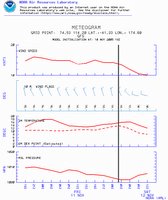 The current aviation forecast only goes out to 1pm, and doesn't have it easing before then. NOAA's GFS model (this meteogram comes from a page that uses word verification, so I can't link to it directly, but you can create your own from this page by entering "NZWN" in the "ICAO or WMO ID" box) shows the wind easing off during the afternoon, but it's unlikely to have the resolution to model Wellington's (ahem) "interesting" microclimate with much accuracy, so I'd take its forecast of under 15kt for sink time with a pinch of salt (spray). So, it's looking like it will be touch and go, and the forecast rain might deter some spectators, but the spectacle should be worth the risk, so jump on the number 1 or number 23 and take a look.
The current aviation forecast only goes out to 1pm, and doesn't have it easing before then. NOAA's GFS model (this meteogram comes from a page that uses word verification, so I can't link to it directly, but you can create your own from this page by entering "NZWN" in the "ICAO or WMO ID" box) shows the wind easing off during the afternoon, but it's unlikely to have the resolution to model Wellington's (ahem) "interesting" microclimate with much accuracy, so I'd take its forecast of under 15kt for sink time with a pinch of salt (spray). So, it's looking like it will be touch and go, and the forecast rain might deter some spectators, but the spectacle should be worth the risk, so jump on the number 1 or number 23 and take a look.
 Last week's mystery bar really seems to have stumped you, so here's a more revealing photo and a little clue about its name: it really can't be beaten.
Last week's mystery bar really seems to have stumped you, so here's a more revealing photo and a little clue about its name: it really can't be beaten.
 With very little structural work, this could be transformed into an enclosed space suitable for a range of activities. The biggest job would be putting in a raised platform above the car park. Cheap lightweight walls could be suspended from the sides of the motorway above, and if these were made from a translucent material like polycarbonate, they could let in some natural light while providing passers by with a glimpse of the activity inside.
With very little structural work, this could be transformed into an enclosed space suitable for a range of activities. The biggest job would be putting in a raised platform above the car park. Cheap lightweight walls could be suspended from the sides of the motorway above, and if these were made from a translucent material like polycarbonate, they could let in some natural light while providing passers by with a glimpse of the activity inside.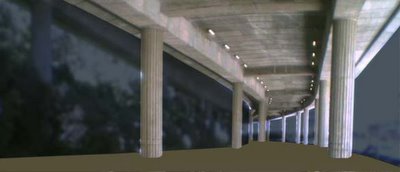 The result wouldn't be flash, and it wouldn't be insulated, but the same applies to Shed 1 and as the sportspeople say, they love it the way it is. I haven't been there with a tape measure to see whether it would be wide enough, but it looks just about as wide as the Sheds, and it's four times as long as the usable part of Shed 1. This could be built in stages, eventually allowing plenty of space for other sports (e.g. badminton, tennis) and events over time.
The result wouldn't be flash, and it wouldn't be insulated, but the same applies to Shed 1 and as the sportspeople say, they love it the way it is. I haven't been there with a tape measure to see whether it would be wide enough, but it looks just about as wide as the Sheds, and it's four times as long as the usable part of Shed 1. This could be built in stages, eventually allowing plenty of space for other sports (e.g. badminton, tennis) and events over time.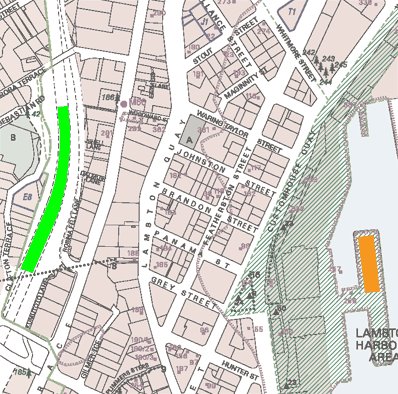


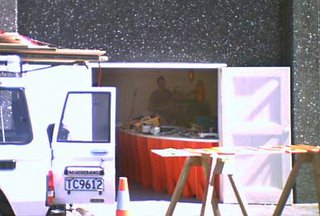 Some time ago we heard that a fish 'n' chip shop was planned for one of the boatsheds under Frank Kitts Park. From the looks of things, it's about to open soon, and the curvy organic shapes and bright orange and white colour scheme hint that it's going to be a bit more stylish than your average neighbourhood chippy. And around the corner overlooking the lagoon, in the old La Felicita space, there will be a new gelato stall run by the Kaffee Eis people. Excuse me while I wipe the drool off my blog.
Some time ago we heard that a fish 'n' chip shop was planned for one of the boatsheds under Frank Kitts Park. From the looks of things, it's about to open soon, and the curvy organic shapes and bright orange and white colour scheme hint that it's going to be a bit more stylish than your average neighbourhood chippy. And around the corner overlooking the lagoon, in the old La Felicita space, there will be a new gelato stall run by the Kaffee Eis people. Excuse me while I wipe the drool off my blog.
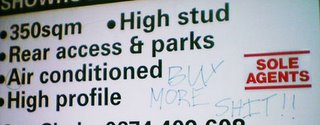 This real estate sign on a vacant showroom in Willis St has been grafittied to express disgust with consumer society and its relentless need to drive more spending. I presume that it is the work of someone who identifies as an anarchist, given the circle that has been added around the 'A' on the left of the sign.
This real estate sign on a vacant showroom in Willis St has been grafittied to express disgust with consumer society and its relentless need to drive more spending. I presume that it is the work of someone who identifies as an anarchist, given the circle that has been added around the 'A' on the left of the sign.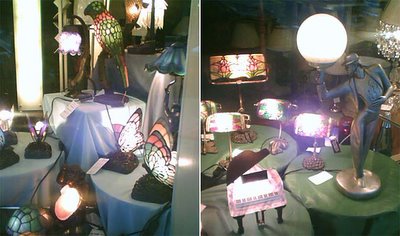
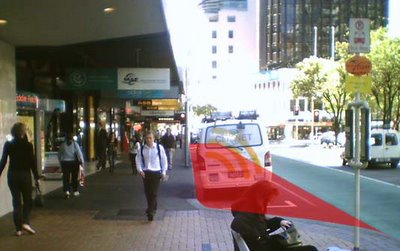
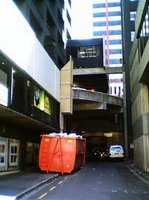 There will also be an attempt to make Farmers and Masons lanes less dingy, so that they can become safer and more attractive links between Lambton Quay and the Terrace. As this photo of Farmers Lane shows, I think there's definitely some room for improvement!
There will also be an attempt to make Farmers and Masons lanes less dingy, so that they can become safer and more attractive links between Lambton Quay and the Terrace. As this photo of Farmers Lane shows, I think there's definitely some room for improvement!The jay walking culture and the culture of red crossers is ... not a sign of well-behaved versus less well-behaved pedestrians, but merely a sign of a traffic system which is not laid out to meet pedestrian requirements for short waiting periods at lights and easily accessible crossings at level. ... A high number of jay walkers in the city usually points to a traffic culture which is out of balance.The council is seeking submissions on these proposals, so have a good look at the details, and if you believe that city streets are better when people are put ahead of cars, fill in the online form and add any other suggestions you might have. Submissions close on the 5th of December.
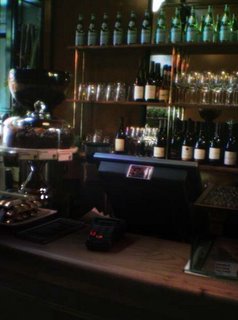 This place has a very cosy, European feel, with its dark wood and gleaming metal. Although better known for its coffee, it also boasts a small but cunning wine list that reaches beyond the usual suspects to include delights from Hungary and the Basque regions of Spain.
This place has a very cosy, European feel, with its dark wood and gleaming metal. Although better known for its coffee, it also boasts a small but cunning wine list that reaches beyond the usual suspects to include delights from Hungary and the Basque regions of Spain.